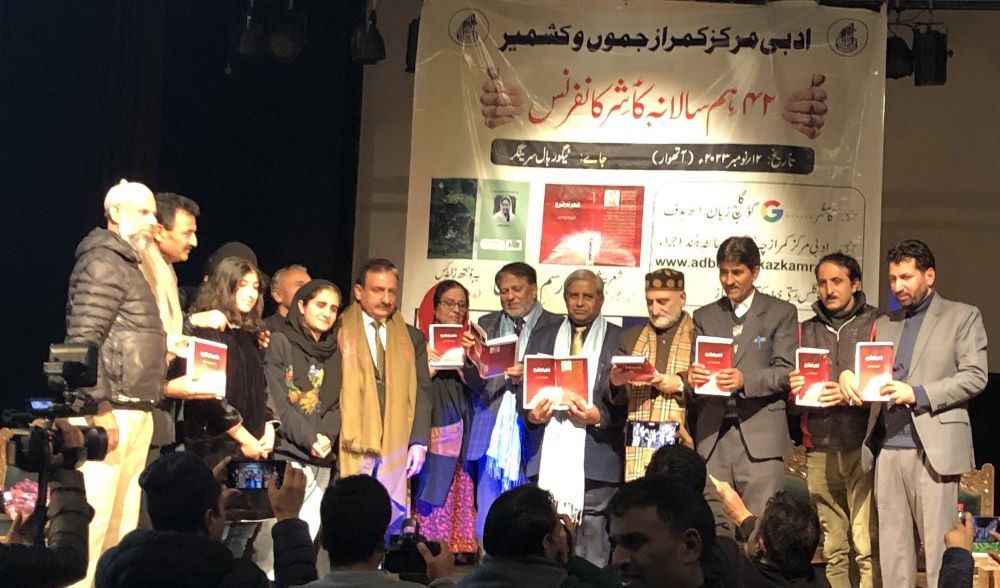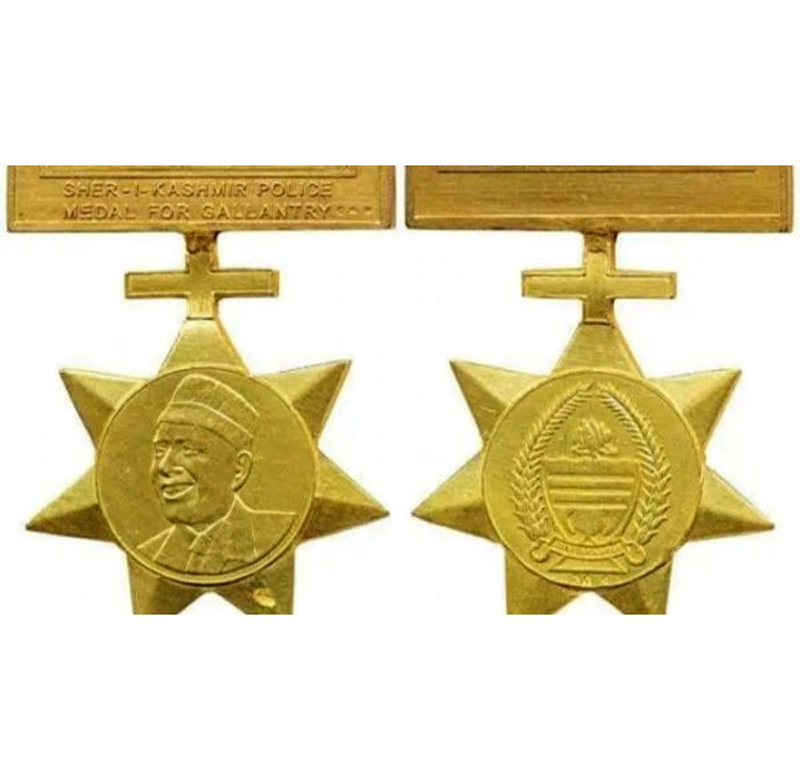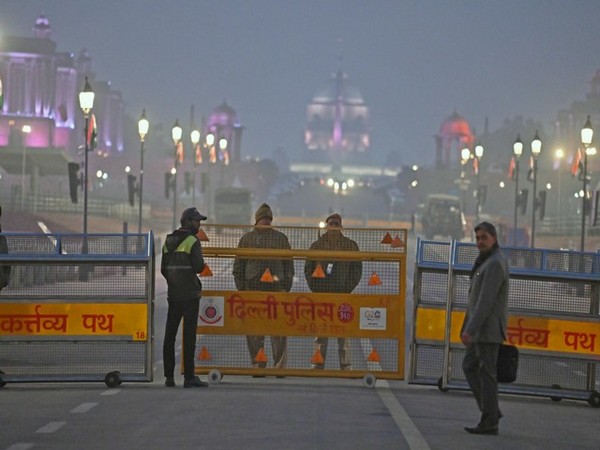by Bilal Gani
Kashmiri literature, akin to different literary traditions, has traditionally mirrored gender biases formed by societal norms. Conventional works typically adhered to stereotypical depictions of gender roles, reinforcing prevailing social expectations relating to girls’s behaviour, roles, and duties.
Kashmiri literature gives a nuanced reflection of the intricate cultural, social, and political panorama of the area. The exploration of gender roles, identities, and ladies’s experiences holds profound significance inside this literary area, evolving.
Gender roles and identities are intricately interwoven into the narratives, moulding societal perceptions of the roles performed by women and men. Such depictions typically discover their roots within the cultural and historic context of the area, formed by spiritual beliefs, societal norms, and political realities.
Historical Kashmiri literature, rooted in custom, typically depicted girls in standard roles, emphasising their home and familial obligations. But, because the area skilled transformations, together with cultural exchanges with Central Asia and Persia, the portrayal of gender roles in literature started to shift. The affect of Sufism, with its emphasis on religious equality, left a long-lasting affect on Kashmiri literary works, difficult established gender norms.
Within the medieval interval, highly effective feminine voices emerged, each as poets and characters. Figures like Habba Khatoon, a famend poetess-queen, performed a pivotal position in reshaping the literary panorama, defying conventional stereotypes. Their poetry, centred on themes of affection, longing, and resilience, supplied a contemporary perspective on girls’s experiences.
The colonial period launched challenges and alternatives for the illustration of gender in Kashmiri literature. Western feminist concepts began influencing the discourse, resulting in a extra nuanced portrayal of ladies in literary works. Writers delved into themes of ladies’s empowerment, training, and struggles inside patriarchal buildings, reflecting evolving social dynamics. Deena Nath Nadim’s poetry, capturing the social and cultural lifetime of Kashmir, offered insights into the gender dynamics of his time.
Within the up to date period, Kashmiri literature continues to evolve, reflecting the complexities of contemporary society. Notable works like Mo Zan (My Spouse) by Nadim discover the essence of marital relationships and ladies’s roles in society. Tsamak Posh delves into the emotional and societal struggles confronted by girls in Kashmir, addressing themes of resilience towards a difficult backdrop.
Feminine authors and poets have gained prominence, providing numerous narratives that problem stereotypes and illuminate the multifaceted experiences of ladies in Kashmir. Themes corresponding to battle, displacement, and resilience are explored by way of the lens of gender, offering a deeper understanding of the intersectionality of ladies’s identities within the area.
Early Kashmiri literature depicted women and men in predefined roles, assigning girls to home and caregiving roles, whereas males have been portrayed as figures of authority and decision-makers. Jonaraja, the Kashmiri historian and writer of Rajatarangni, not directly highlighted gender roles in his work, whereby girls have been typically forged in conventional roles corresponding to wives, moms, or objects of want, reinforcing the societal norms of the time.
Mahimabhatta, a fourteenth-century Kashmiri poet, often adhered to traditional gender roles in his poetry, portraying girls as symbols of magnificence, advantage, and familial devotion. This displays the prevailing societal expectations relating to girls’s roles in household and group life. Bilhana, an eleventh-century Kashmiri poet, authored Caurapancasika, a love poem that introduced conventional gender roles, depicting girls as objects of want and sweetness. These representations have been deeply rooted in societal norms and influenced literary portrayals.
Regardless of these conventional constraints, Kashmiri literature witnessed the emergence of noteworthy feminine poets. Their poetry explored feelings, starting from love and longing to societal critique, difficult established gender norms and offering a novel perspective on girls’s experiences.
Famend Kashmiri poet Rahman Rahi’s verses delve into the cultural and social intricacies of Kashmir, encapsulating the experiences of each women and men. In his poem Zooni Phoolun Gulab Vuchum , Rahi touches upon collective experiences, addressing the roles and feelings of each genders, and celebrating Kashmir’s cultural richness. One other work, Tsoli Moiye Batne Dith, explores celestial imagery, transcending conventional gender roles to replicate on the shared human expertise. Whereas Rahi’s works are multifaceted, they provide insights into the roles and struggles of ladies in Kashmiri society.
The battle in Kashmir has considerably influenced gender dynamics, with regional literature typically delving into girls’s experiences in battle conditions. These literary works emphasise the resilience, struggles, and contributions of ladies. Feminine authors contribute narratives that illuminate the distinctive challenges confronted by girls in battle zones, providing a perspective that’s each poignant and highly effective.
Modern Kashmiri literature is more and more exploring LGBTQ+ identities and experiences, with authors tackling points associated to sexual orientation and gender identification. These works contribute to discussions surrounding inclusivity, acceptance, and the rights of LGBTQ+ people within the area.
Particular writings inside Kashmiri literature are devoted to addressing social change and initiatives selling girls’s empowerment. These works commend girls’s accomplishments throughout numerous domains, fostering a optimistic narrative on gender equality and the development of ladies in Kashmiri society.
Kashmiri tutorial and writer Dr Aijaz Ahmad Bund has delved into the life experiences of the transgender group in Kashmir by way of two books. Hijras of Kashmir: A Marginalized Type of Personhood supplies detailed research of the various and distinct Hijra subculture of Kashmir.
Kashmiri literature, akin to different literary traditions, has traditionally mirrored gender biases formed by societal norms. Conventional works typically adhered to stereotypical depictions of gender roles, reinforcing prevailing social expectations relating to girls’s behaviour, roles, and duties. It’s essential, nevertheless, to acknowledge the evolution inside Kashmiri literature, which has progressively embraced a extra nuanced and complicated portrayal of gender dynamics over time.
Whereas early texts may need exhibited gender biases, up to date Kashmiri literature has diversified, incorporating a broad spectrum of voices and views. Feminine authors and poets have performed a big position in reshaping the literary panorama. They problem conventional biases, presenting different viewpoints that contribute to a extra inclusive narrative.
Importantly, the acknowledgement of gender biases in literature doesn’t indicate common perpetuation inside the Kashmiri literary custom. Many authors have deliberately labored to defy gender stereotypes, creating narratives that characteristic robust, unbiased feminine characters and handle points associated to gender inequality and discrimination.
(The writer is a researcher. Concepts are private.)
#Progressive #Unfolding #Gender #Roles #Kashmiri #Literature
Kashmir Tourism
Kashmir News
Source Link



